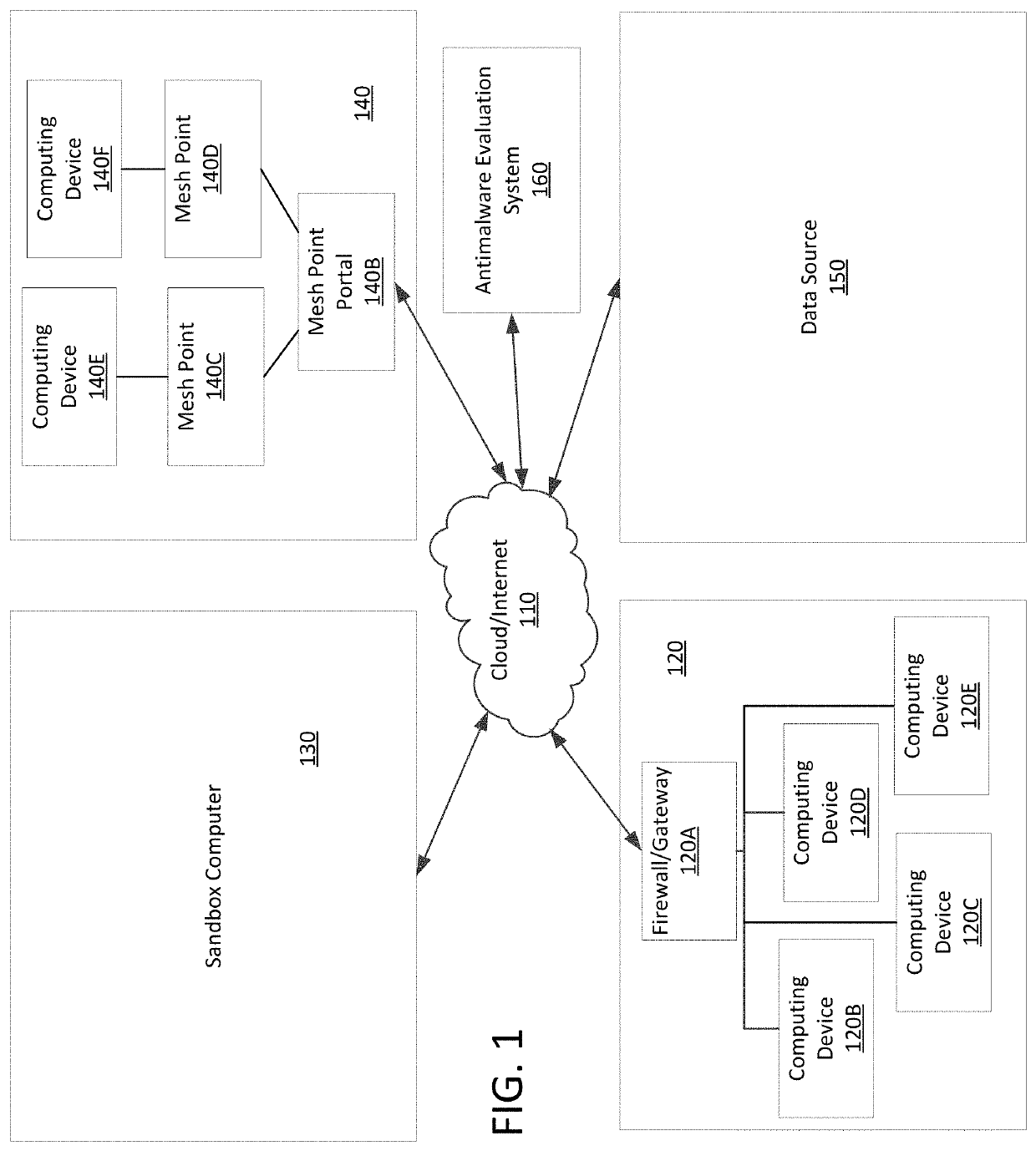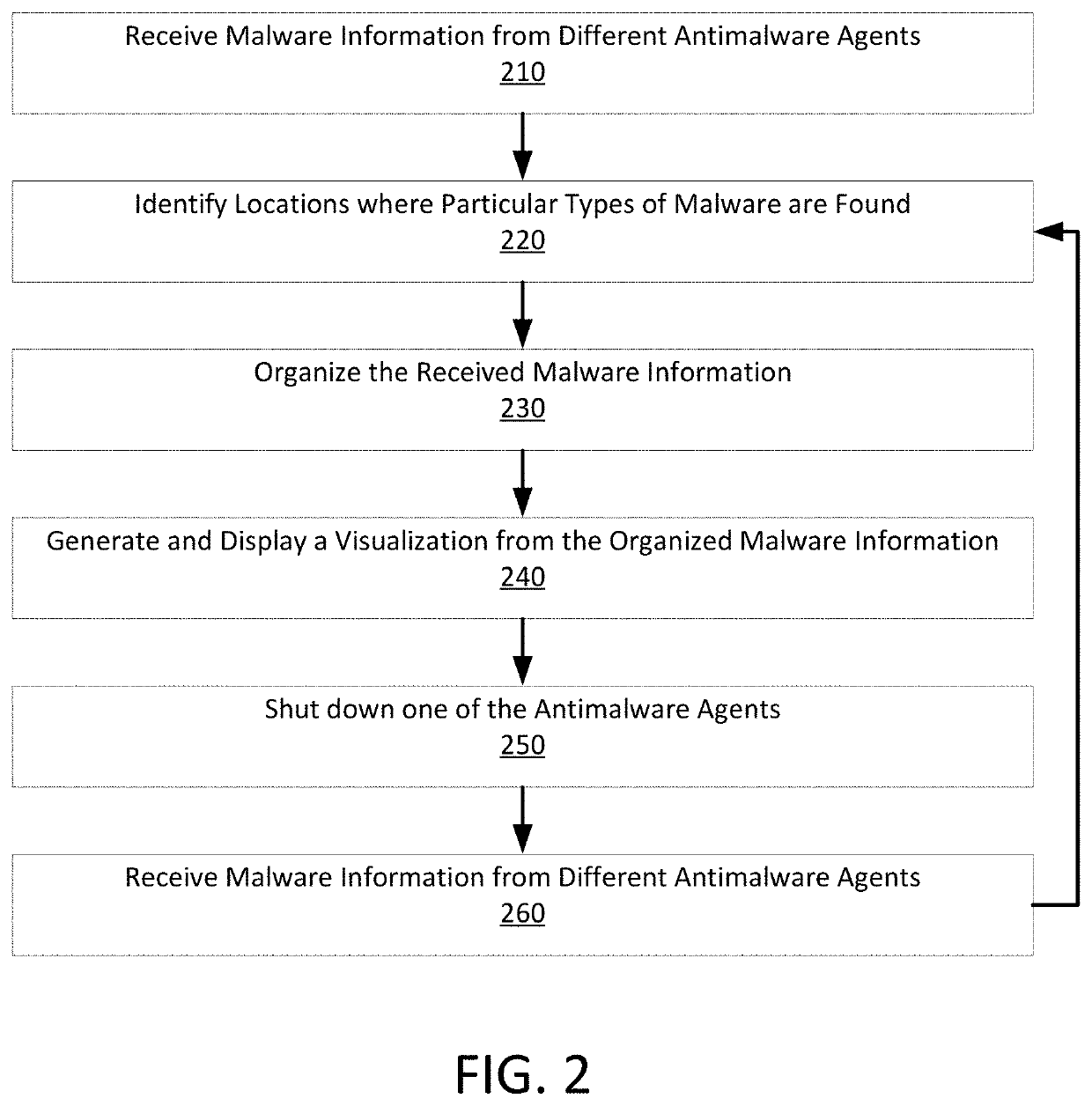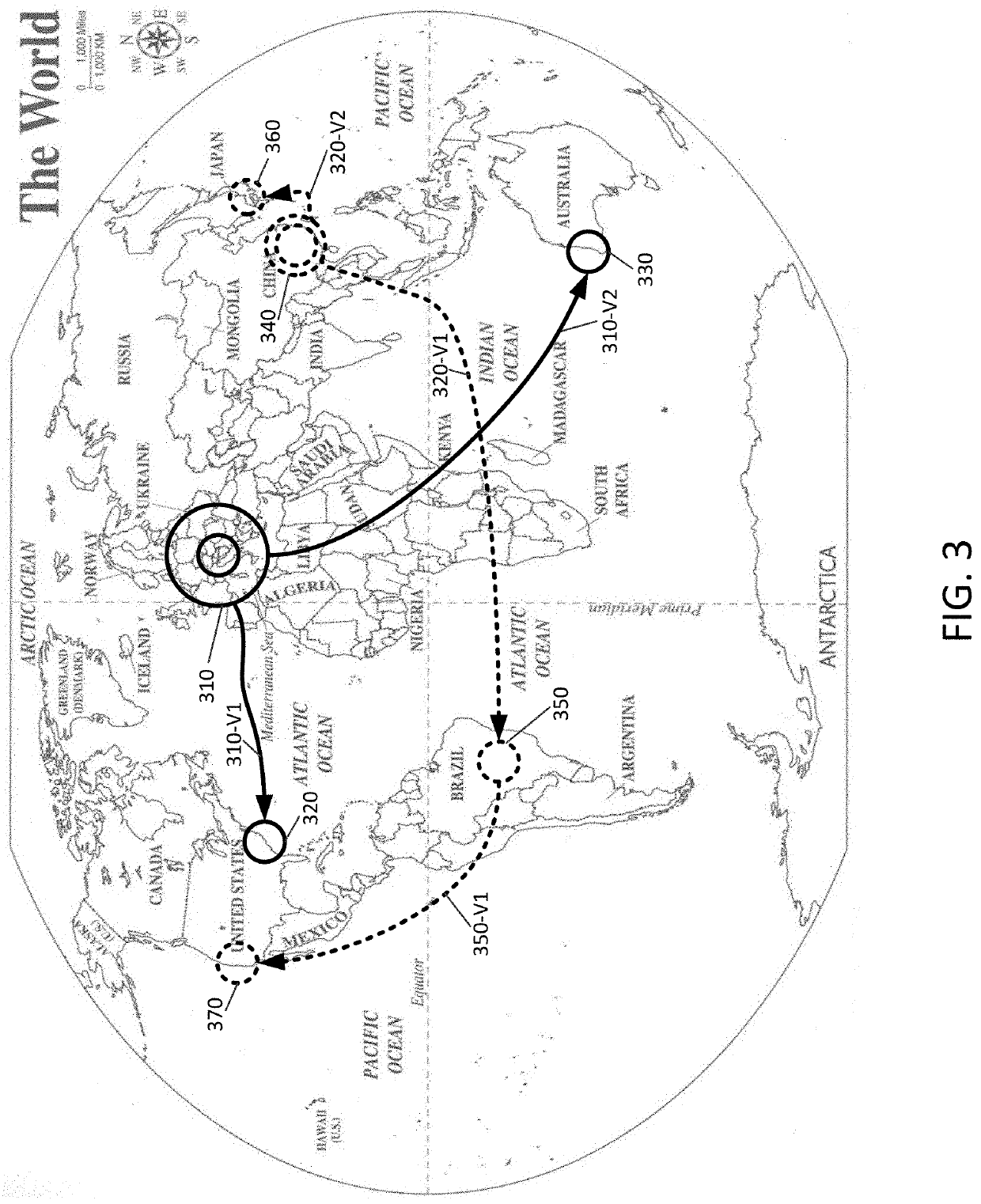Analysis of historical network traffic to identify network vulnerabilities
a technology of network traffic and vulnerability detection, applied in the field of historical network traffic analysis to identify network vulnerability, can solve the problems of increasing the difficulty of identifying newly developed malware, affecting the identification of newly developed malware, and affecting the security of computer systems and computer networks
- Summary
- Abstract
- Description
- Claims
- Application Information
AI Technical Summary
Benefits of technology
Problems solved by technology
Method used
Image
Examples
Embodiment Construction
[0021]The present disclosure relates to methods and apparatus that collect, organize, and analyze data regarding malware threats such that the spread of malware can be quantified and damage associated with that malware can be prevented. The present disclosure is also directed to preventing the spread of malware before that malware can steal data or damage computers and to identifying an amount of damage that malware could have wreaked if it were allowed to spread though a computer network. Methods consistent with the present disclosure may be directed to optimizing tests performed at different levels of a multi-level threat detection and prevention system. As such, methods consistent with the present disclosure may collect data from various sources when organizing threat data for display on a display. Such threat data may be collected various sources that may include computers that run antimalware software, firewalls or gateways that reside at a boundary between a private computer n...
PUM
 Login to View More
Login to View More Abstract
Description
Claims
Application Information
 Login to View More
Login to View More - R&D
- Intellectual Property
- Life Sciences
- Materials
- Tech Scout
- Unparalleled Data Quality
- Higher Quality Content
- 60% Fewer Hallucinations
Browse by: Latest US Patents, China's latest patents, Technical Efficacy Thesaurus, Application Domain, Technology Topic, Popular Technical Reports.
© 2025 PatSnap. All rights reserved.Legal|Privacy policy|Modern Slavery Act Transparency Statement|Sitemap|About US| Contact US: help@patsnap.com



